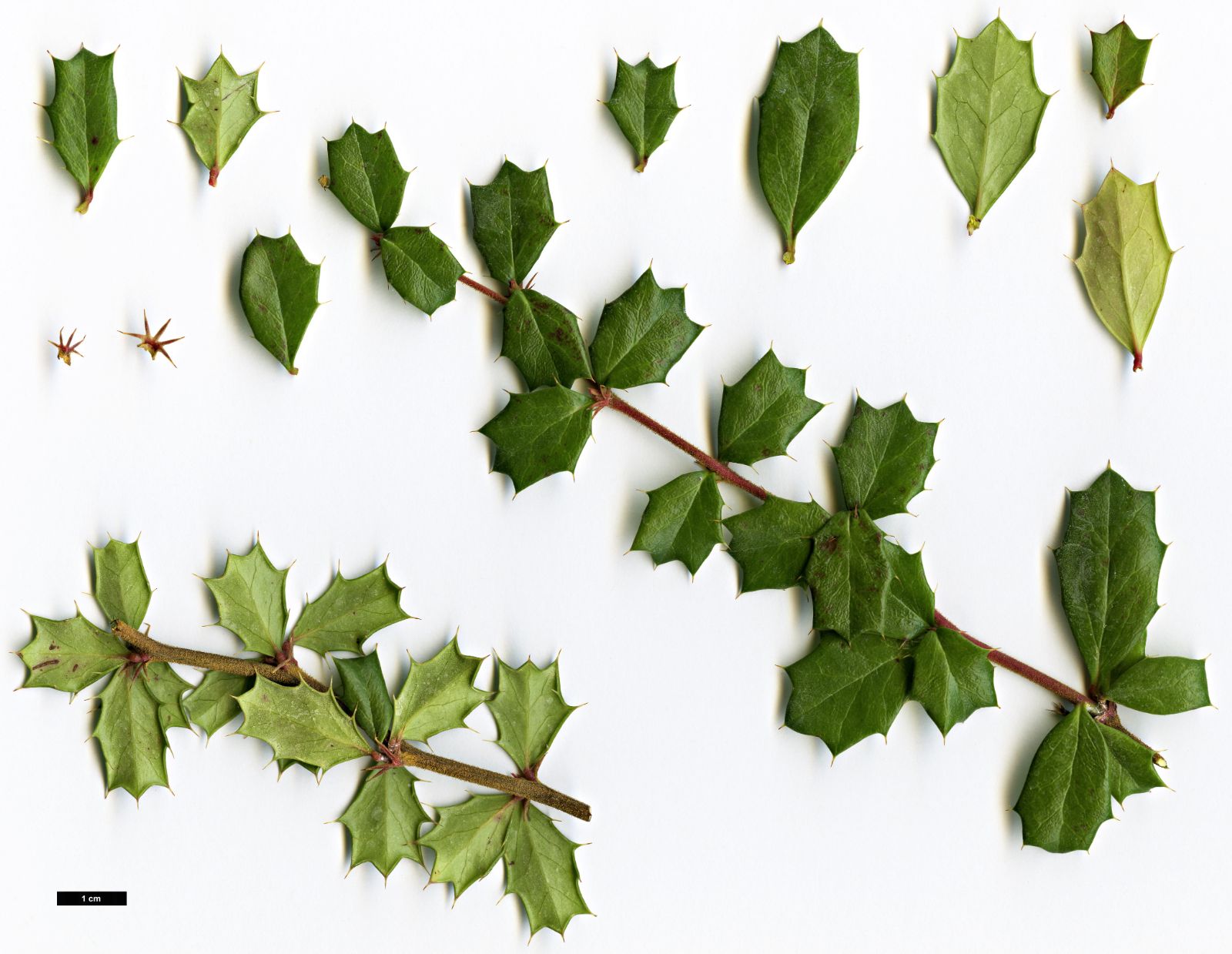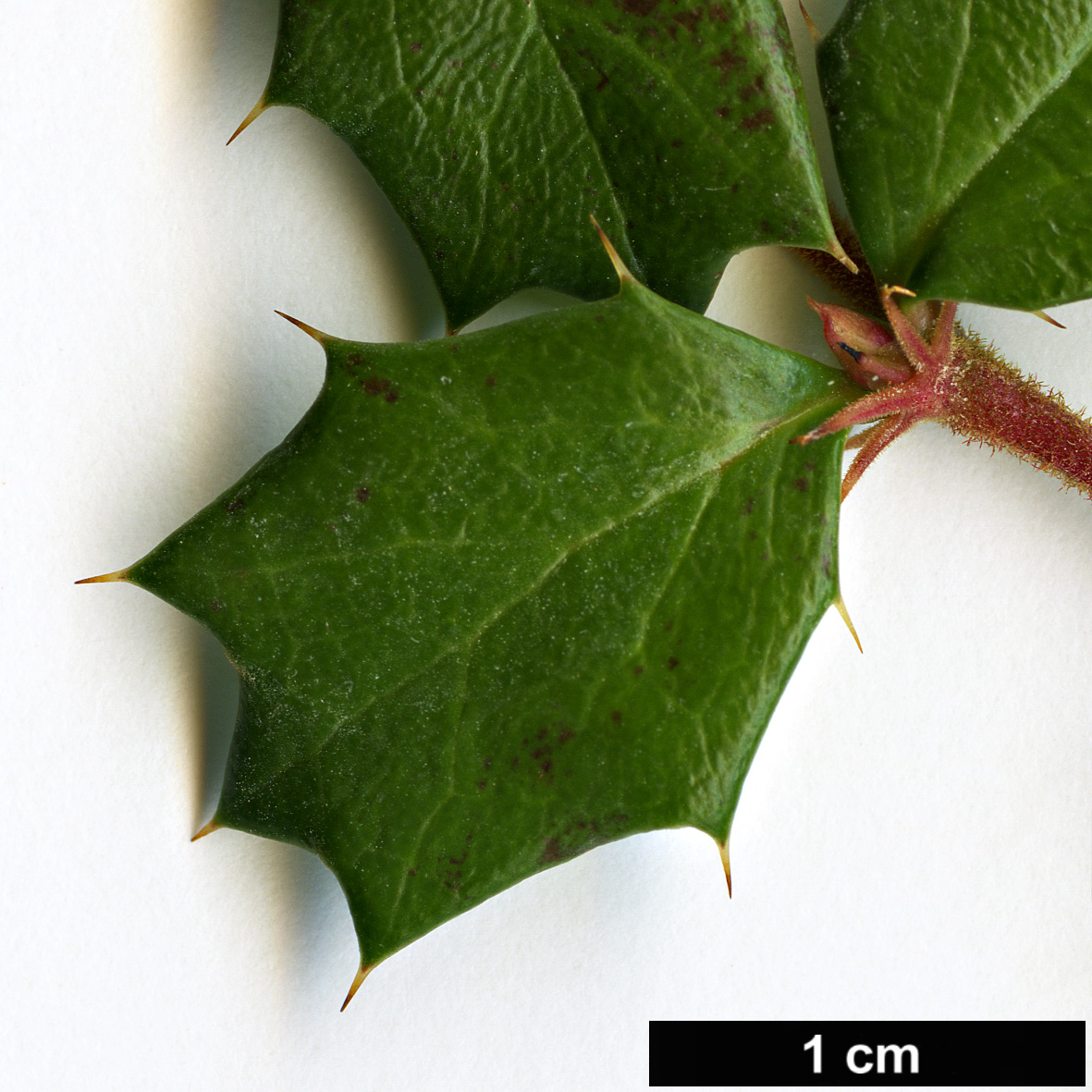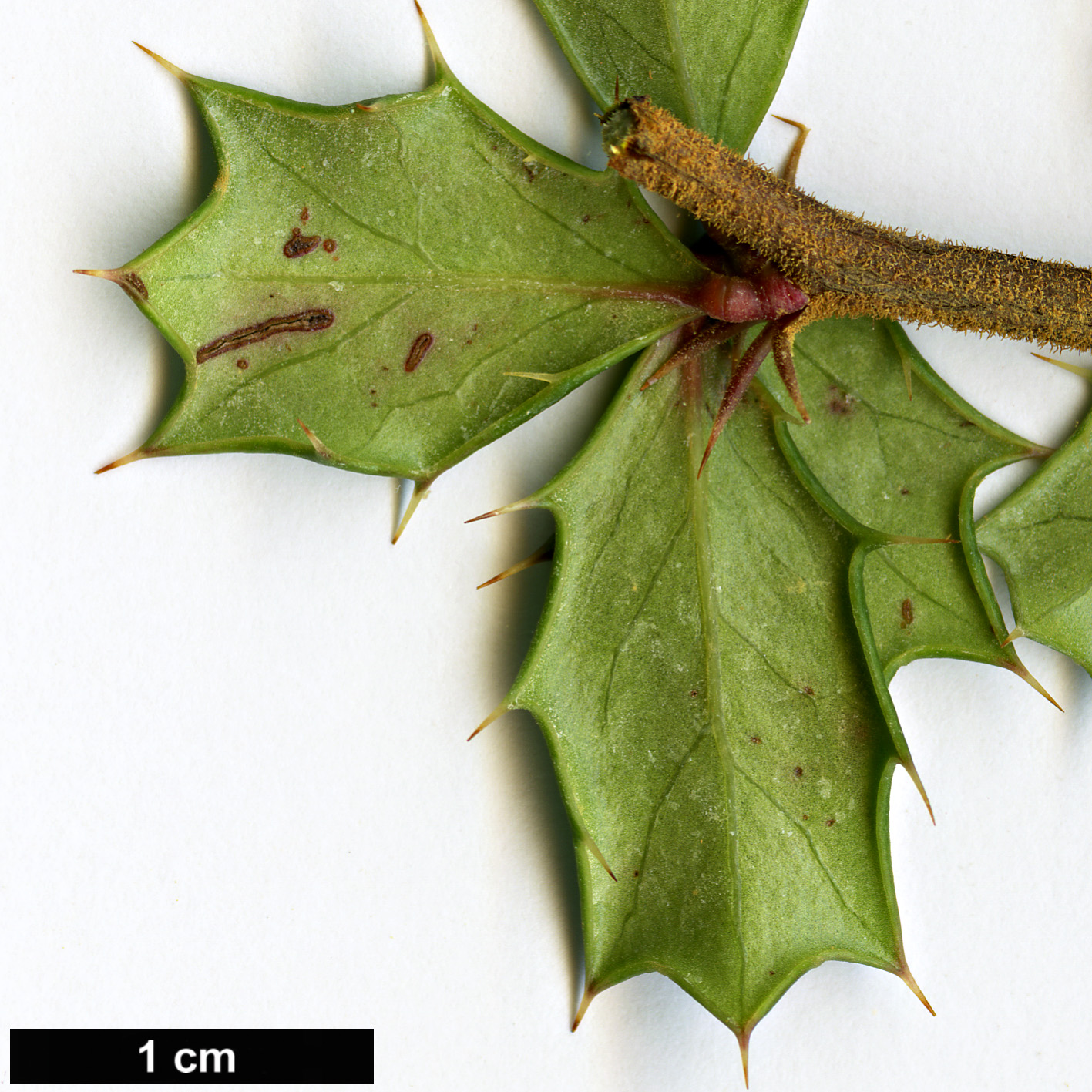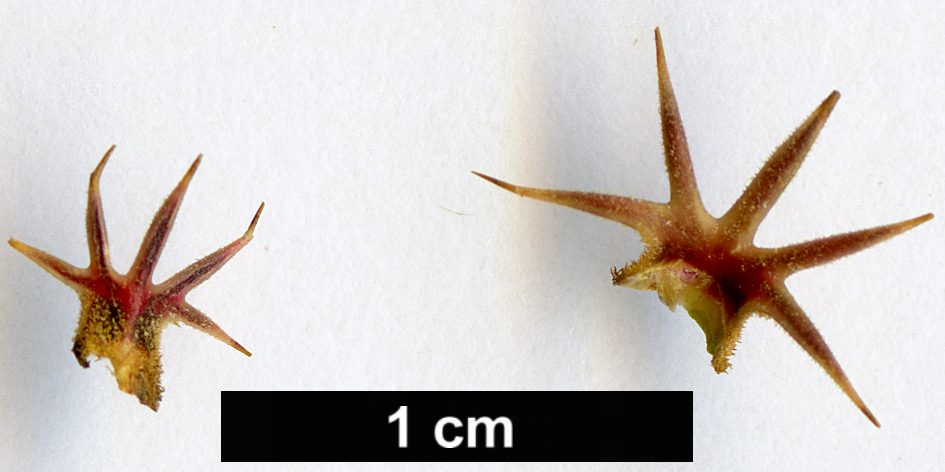Berberis darwinii
Credits
Article from Bean's Trees and Shrubs Hardy in the British Isles
Recommended citation
'Berberis darwinii' from the website Trees and Shrubs Online (treesandshrubsonline.
Genus
Infraspecifics
Other taxa in genus
- Berberis actinacantha
- Berberis aetnensis
- Berberis aggregata
- Berberis angulosa
- Berberis aristata
- Berberis asiatica
- Berberis atrocarpa
- Berberis beaniana
- Berberis bergmanniae
- Berberis buxifolia
- Berberis calliantha
- Berberis canadensis
- Berberis candidula
- Berberis × carminea
- Berberis chillanensis
- Berberis chrysosphaera
- Berberis comberi
- Berberis concinna
- Berberis coxii
- Berberis cretica
- Berberis dasystachya
- Berberis diaphana
- Berberis dictyoneura
- Berberis dictyophylla
- Berberis empetrifolia
- Berberis fendleri
- Berberis francisci-ferdinandii
- Berberis gagnepainii
- Berberis glaucocarpa
- Berberis gyalaica
- Berberis hakeoides
- Berberis heterophylla
- Berberis heteropoda
- Berberis hispanica
- Berberis hookeri
- Berberis hypokerina
- Berberis ilicifolia
- Berberis incrassata
- Berberis insignis
- Berberis jamesiana
- Berberis johannis
- Berberis julianae
- Berberis kawakamii
- Berberis koreana
- Berberis lecomtei
- Berberis lepidifolia
- Berberis linearifolia
- Berberis lycioides
- Berberis lycium
- Berberis manipurana
- Berberis mitifolia
- Berberis montana
- Berberis morrisonensis
- Berberis mucrifolia
- Berberis orthobotrys
- Berberis poiretii
- Berberis prattii
- Berberis pruinosa
- Berberis replicata
- Berberis × rubrostilla
- Berberis sanguinea
- Berberis sargentiana
- Berberis sibirica
- Berberis sieboldii
- Berberis silva-taroucana
- Berberis soulieana
- Berberis × stenophylla
- Berberis sublevis
- Berberis temolaica
- Berberis thunbergii
- Berberis tischleri
- Berberis triacanthophora
- Berberis tsarongensis
- Berberis umbellata
- Berberis valdiviana
- Berberis veitchii
- Berberis vernae
- Berberis verruculosa
- Berberis virescens
- Berberis vulgaris
- Berberis wardii
- Berberis wilsoniae
- Berberis yunnanensis
- Berberis zabeliana
An evergreen shrub of dense habit, from 6 to 12 ft high; branchlets covered with a dense, reddish-brown down. Leaves very dark, glossy green, stalkless, hard in texture, obovate, 3⁄4 to 11⁄2 in. long, the apex three-spined, and with one to several spiny teeth down each side; they spring in tufts from the axils of short, multiple spines. Flowers on drooping racemes 11⁄2 to 2 in. long, each flower on a slender stalk longer than itself, deep golden or orange-coloured, tinged with red; petals elliptical notched at the tip. Fruit plum-coloured, roundish oval, the size of small peas. Bot. Mag., t. 4590.
Native of Chile; first discovered by Charles Darwin in 1835, when attached as naturalist to the Beagle on her famous voyage. It was introduced in 1849 by William Lobb for Messrs Veitch, from the island of Chiloe. One of the finest of all evergreen shrubs, it is also perfectly hardy but prefers a not too dry soil and should be given a position sheltered from cutting winds; given these conditions B. darwinii will grow well even on chalky soils. It is in its greatest beauty, of course, during April and May, when laden with its profusion of golden blossom, but it is often very attractive also in early autumn, bearing a large crop of the bluish berries and occasionally a small crop of flowers. In mild and rainy parts of the country B. darwinii attains a great size. At Glenakil in Argyll there was a specimen 24 ft in diameter and 14 ft high; stem girth 4 ft 2 in.
B. darwinii should be raised from seed, which produces forms that vary somewhat in flower-colour and of these some have been selected and are in commerce as clones. Those known as B. darwinii nana and B. d. prostrata, although near to the species in their botanical characters, belong properly to its hybrid with B. empetrifolia (see B. × stenophylla). ‘Flame’, raised by Messrs Marchant, also shows, though slightly, the influence of that species.




